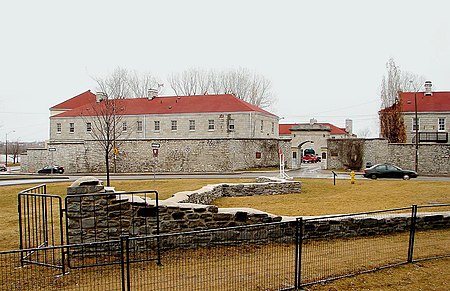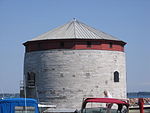Fort Frontenac

Fort Frontenac was a French trading post and military fort built in July 1673 at the mouth of the Cataraqui River where the St. Lawrence River leaves Lake Ontario (at what is now the western end of the La Salle Causeway), in a location traditionally known as Cataraqui. It is the present-day location of Kingston, Ontario, Canada. The original fort, a crude, wooden palisade structure, was called Fort Cataraqui but was later named for Louis de Buade de Frontenac, Governor of New France who was responsible for building the fort. It was abandoned and razed in 1689, then rebuilt in 1695. The British destroyed the fort in 1758 during the Seven Years' War and its ruins remained abandoned until the British took possession and reconstructed it in 1783. In 1870–71 the fort was turned over to the Canadian military, who continue to use it.
Excerpt from the Wikipedia article Fort Frontenac (License: CC BY-SA 3.0, Authors, Images).Fort Frontenac
Ontario Street, Kingston
Geographical coordinates (GPS) Address Nearby Places Show on map
Geographical coordinates (GPS)
| Latitude | Longitude |
|---|---|
| N 44.233333333333 ° | E -76.478611111111 ° |
Address
Canadian Army Command and Staff College
Ontario Street 317
K7K 0B4 Kingston
Ontario, Canada
Open on Google Maps







